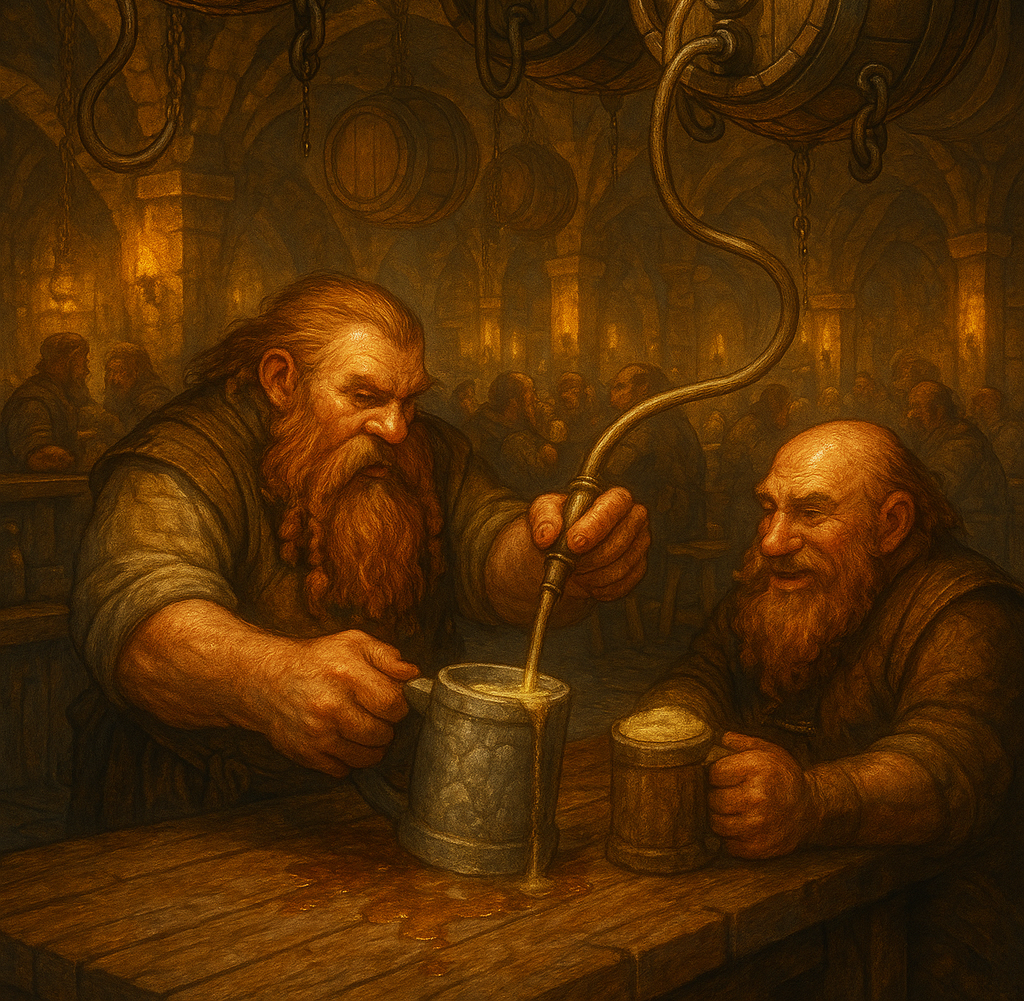A
dire problem in need of a drastic solution. How do you get good ale from the storage room of a tavern all the way to the bar itself?
Existing Technologies
The current method to handle this issue is to have the kegs stored into recesses in the ceiling above a bar with tubing taking the contents down to valved openings. The dispensing of drinks worked well this way but had a few substantial downsides:
The kegs would often spring a leak, spritzing the bar with the golden liquid. Wasting perfectly good ale while simultaneously infuriating bartenders.
The sediment left inside each cask would settle at the bottom and would be the first thing to be dispensed. Each pour would contain an amount of sediment, meaning that ten percent of each drink wouldn’t be fit for consumption (Or at the very least, ruin the flavour)
The hoses that lead down from the ceiling housing were incredibly accessible and once a tavern evening got to its rowdy hours, this proved problematic when dealing with opportunistic or entitled patrons.
Heat can build up quickly in underground environments and the ceilings of taverns proved to be a great place for that heat to pool.
The changing of kegs proved to be a difficult and potentially risky task
All of these issues simply would not do.
The Fix
The tavern regular and inventor of the ale engine was a dwarf named Klloy’Ead. His previous profession was that of a humble plumber and while working on the
liquid flame systems that were prevalent around cities all across the dwarven territories. While in his favoured tavern one evening, he was pondering about how the pressurised systems in place for liquid flame could prove to have more than a singular purpose. And so, the ale engine was born.
The system consists of a vacuum chamber which houses a piston, a manually operated handpump and an ale line to connect the system both together and to the keg. The key to the system was the inclusion of small one-way valves. One which controls the flow of ale from a keg up into the vacuum chamber and one which allows the flow through the piston for delivery out of the nozzle.
This new delivery method allowed for the kegs to be stored in cooler environments away from the tavern’s main area. It also allowed for the seamless changing of kegs as and when required. Although at first glance, this change seems like a relatively trivial one, the huge increase in speed of delivery of chilled ale proved to be a huge boon for dwarven society and their access to clean, cool beverages. In turn, this also had a great effect on dwarven socialising. With more dwarves spending time in taverns, social cohesion and overall happiness improved and whenever this is achieved, a boom in population is sure to follow.
For his contributions to dwarven society, Klloy’Ead was bestowed the title of
Maven for the use of his knowledge and expertise to solve such a glaring issue.
This is a submission for my second Summer Camp - I hope you enjoy the world I am building!











"The sediment left inside each cask would settle at the bottom and would be the first thing to be dispensed. Each pour would contain an amount of sediment, meaning that ten percent of each drink wouldn’t be fit for consumption (Or at the very least, ruin the flavour)" Some modern craft brews use the sediment in their bottles as a selling point (though it's way less than 10%). Modern factory made beer normally doesn't have sediment. Small batch craft beer has some. I used to homebrew my own beer, and the sediment was something that was off-putting to some That's why I would normally pour from bottle to mug rather than drink from the bottle. Easier to avoid a mouthful of sediment that way.
I've been wanting to tackle the ale making process within my world for a while. My notepad logic is that the kegs are made from a fungal plank and the increase of sediment is a combination of mycelial material and remnants of the brewing process. Although in hindsight, 10% does feel pretty high. I need to dive down the rabbit hole of brewing I think!